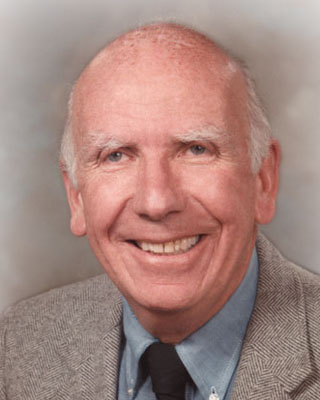Seismological Society of America Annual Meeting
April 17-19, 2012, San Diego, California
Physics in Seismology: The Legacy of Leon Knopoff
"This special session solicits papers honoring the scientific accomplishments of Leon Knopoff (1925-2011) by demonstrating their impact on modern seismology. Knopoff introduced a wide range of physics topics to seismology, laying down the foundation for much current work. Papers that demonstrate the Knopoff heritage in recent developments in nonlinear earthquake dynamics, earthquake statistics, theoretical elastodynamics, wave propagation, and tectonophysics would be particularly relevant. Knopoff's work involved representation theory, spring-block sliders, self-organized criticality, earthquake statistics, stochastic branching models of the source, physics of the ETAS model and Omori laws, Q, and application of condensed matter physics to seismology. The objective of the session is to highlight how this type of scientific approach can serve as an example for future work."
Session Chairs: Paul Davis, UCLA; Freeman Gilbert, UCSD; David Jackson, UCLA; Thomas Jordan, USC
presentations
The Burridge-Knopoff Slider Block Model: A Retrospective Analysis and Future Outlook John Rundle
Is the global sequence of large earthquakes, with aftershocks removed, Poissonian? Peter Shearer
Modulation of tectonic tremor by the tides: physical models descended from Leon Knopoff with application to the deep San Andreas Nick Beeler
Physics of Q Igor Morozov
Probabilistic Earthquake Forecasts Based on Branching Models of Seismicity: Tracing Leon Knopoff's Contributions Maximilian Werner
Triggering Cascades and Statistical Properties of Aftershocks Joern Davidsen
Velocities of Plate Motions, Fault Rupture, and Epicenter Migration: a Unified Mesoscale Framework based upon Statistical Mechanics of Cracks Shahar Ben-Menahem
Ground Motion Prediction Using Virtual Earthquakes for Kinematic Rupture Models Marine Denolle
Ambient-Field Green’s Functions From Asynchronous Seismic Observations Shuo Ma
Point Source Seismogram using 2D Staggered-Grid Finite Difference Method Dunzhu Li
Earthquake Source Physics Studied with Elastodynamic Modeling and Laboratory Seismology Gregory McLaskey
posters
Rupture Driving Force for Interlocking Heterogeneous Plate Coupling and the Recent Megathrust Earthquakes Fumiko Tajima
Interpreting Tsunami Source Clustering in Terms of a Branching Process Eric Geist
The Effects of Static Coulomb, Normal and Shear Stress Changes on Earthquake Occurrence in Southern California Anne Strader
STATSEI 7
7th International Workshop on Statistical Seismology
May 25-27, 2011, Thera (Santorini), Greece
Session 4: Prospective and Retrospective Testing of Earthquake Forecasts & Hazard/Risk Assessment
Chairs: Thomas Jordan, USC; Sandy Steacy, University of Ulster
Leon Knopoff Lecture
Full Earth High-resolution Earthquake Forecasts and their Testing Yan Kagan
This was the first Leon Knopoff Lecture, now to be given at every biannual STATSEI meeting.
 L E O N K N O P O F F ____________________________________________________________________________________________________________
L E O N K N O P O F F ____________________________________________________________________________________________________________